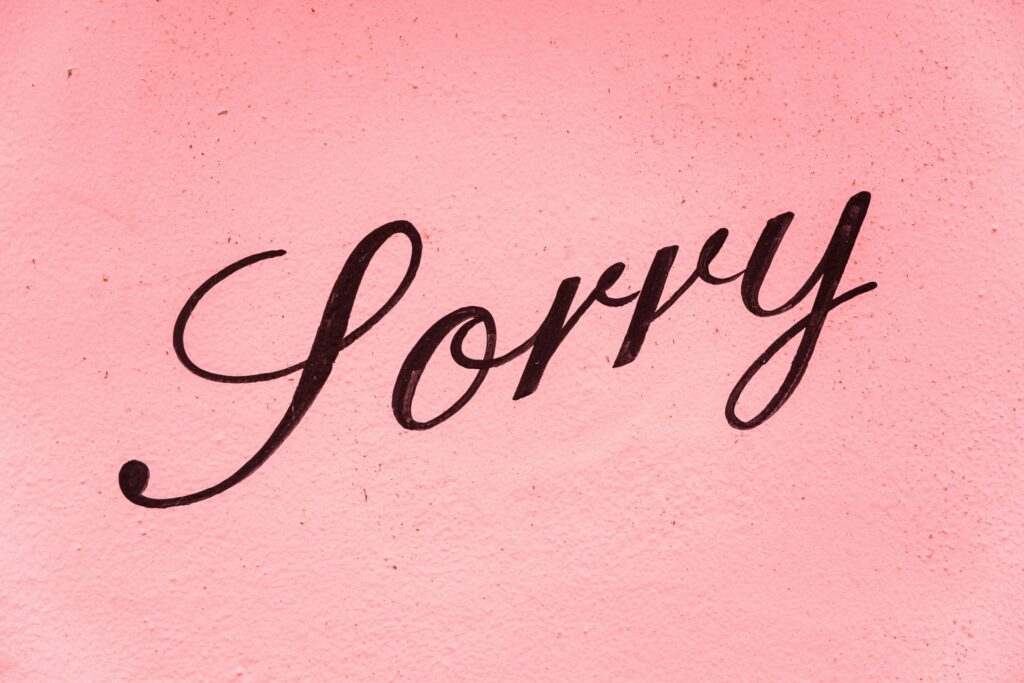Bringing Final Response Letters into 2020 – why is it so hard to say sorry the right way?
It’s been hard to ignore that this year has already been very tumultuous. We’ve had two storms, we’ve had Brexit, we’ve had flooding and now we have the Coronavirus running amok across the globe. I mean it’s only March and 2020 has already thrown a lot at us.
I can imagine many of you are thinking, so what? What has this got to do with complaints? Masses and that’s because for those of you, that like me have been in complaints for quite some time, you’ll know that complaints always thrive in times of things going wrong. It’s no coincidence that complaint numbers increase when the economy squeezes or there’s pressure on people’s pockets. And so it pays to reflect on what we can do differently in 2020, to make sure we’re doing the best we can in difficult circumstances, and to nail those Final Response Letters. And, so this week we’re thinking…
Is there still space for standard paragraphs in 2020?
For the most part it seems that businesses have come away from standard paragraphs in the body of their Final Response Letters. Thank goodness! I was using standard paragraphs in 1999, not for FRLs, but when I worked for a life company. I then used them again in 2002 when I worked at the Ombudsman. I hated them then and I still don’t have much time for them now.
It’s not just the apparent ease with which we can start to rely on them. I mean it doesn’t take any brain engagement to construct a letter from standard paragraphs, which might explain why I never seemed to issue one without a typo, annoyingly. And that’s despite triple checking those letters.
I think my annoyance also came through in those passive-aggressive typos because I hated how they never sounded like me. I’d speak to people over the telephone, and let them know I was sending a letter and then they’d get what can only be described as a very robotic sounding missive, that had no real emotions in it at all. So, it makes me wonder why we ever thought it was a plan to rely on them at all, other than for convenience.
Topping and tailing
So, thank goodness that’s all a thing of the past…except it isn’t, because I know that many businesses still use them to top and tail their Final Response Letters.
Now, it clearly makes sense to use it to tail the letters because there’s a need to make sure certain things have been said. If it was left to individual people to write their own endings, you could start to see some weird and wonderful endings that don’t quite tick the DISP boxes.
But, it’s always interesting to me to see how businesses approach the initial paragraph in the Final Response Letter. And I’m a bit baffled as to why all customers get the same opening paragraph. It’s your opening gambit in terms of positioning your letter and getting the customer interested in what you have to say about their complaint. By using a standard paragraph you don;t acknowledge the individuality of the customer, their complaint and their emotional reactions to what has or hasn’t happened. This means everyone gets the same wording regardless of whether they’ve been screaming at you, whether they’ve been gently sobbing, or have just been incredibly reasonable. That’s not to say that any of these reactions from a consumer is wrong, but I’m just surprised that it elicits the same standard paragraph for every scenario.
Saying sorry the right way
Typically the opening paragraph is something along the lines of ‘we’re very sorry that you’re unhappy with our service…’ or ‘we’re sorry that you’ve had cause to complain to us…’. It absolutely makes sense to acknowledge rather than ignore that someone is upset, but there are better ways of doing it to make sure it lands right. Because, these bland statements, can cause irritation or just land so awkwardly as to turn the customer off the whole letter.
If I’m honest, and I’ve had cause to contact a business to complain recently, I was less bothered about the platitudes covering how sorry they were, I was more concerned with whether they took me seriously or not. And, from the moment I read the ‘sorry’ statement, I realised it wasn’t really taken seriously at all. So I knew that their ‘sorry’ was about as meaningful as my intentions to give up chocolate…
And I guess that there is the issue – if you’re saying sorry in a standard paragraph, and then the rest of the letter doesn’t back up that initial opening apology, then it simply won’t land. If, however, you choose to open your letter with an acknowledgement of the customer’s pain that has been caused, then this will feel genuine and you’re be better placed to weave the acknowledgment throughout the letter rather than just at the beginning.
Yes, the outcome of the letter will have a bearing on how the customer feels at the end of reading it, but there is absolutely nothing wrong with acknowledging that the customer has been left feeling sad/frustrated/irritated/disappointed/upset/confused/flabbergasted…even if, ultimately, the complaint isn’t upheld.
And that for me is the key thing. Saying and being sorry are two entirely different things and look entirely different throughout the investigation and the Final Response Letter, so you need to be able to show that in your Final Response you’re able to recognise the impact on the customer and not just say you’re sorry.
If you want to get ahead of the pack, have a look at our events page for our training events
It would be great to hear from you please feel free to share your views by finding us on Social media
Share on twitter
Twitter
Share on linkedin
LinkedIn



